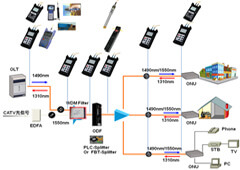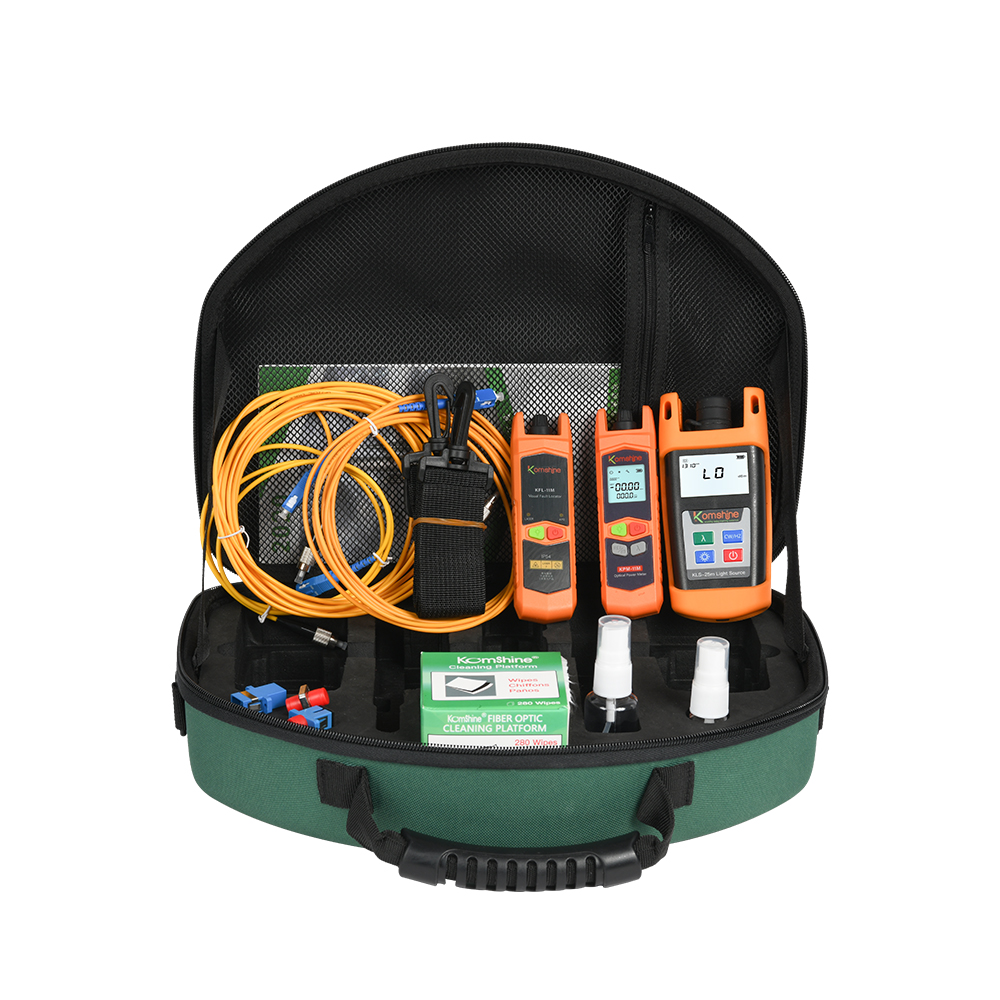Comprehending Exactly How an Optical Measurement System Improves Precision in Industrial Applications
Optical measurement systems play a necessary role in boosting precision across different industrial applications. By leveraging sophisticated innovations such as laser interferometry and 3D imaging sensors, these systems offer high-resolution, non-contact measurements. This capacity lessens the risk of damaging delicate parts while making sure accuracy. The influence of these systems prolongs beyond simple measurements. Exploring their benefits, applications, and future trends discloses an intricate landscape of technology and difficulties that benefits better exam.
The Fundamentals of Optical Measurement Systems
Optical measurement systems serve as crucial devices in various industrial applications, giving precise information collection and analysis. These systems make use of light as a main means of measurement, leveraging optical principles to evaluate dimensions, settings, and surface features of items. They include components such as lasers, electronic cameras, and sensors, which interact to record high-resolution images and information.
The technology enables non-contact measurements, minimizing the danger of damaging delicate parts. Optical measurement systems are flexible, discovering utility in top quality control, assembly verification, and dimensional evaluation throughout various markets. They are particularly reliable in environments where standard measurement strategies may drop short, such as gauging complex geometries or observing fast movements.
As industries continue to advance, the combination of optical measurement systems will remain vital for ensuring accuracy and effectiveness, ultimately enhancing item top quality and operational productivity in different manufacturing procedures.
Trick Technologies Behind Optical Measurement
Key innovations such as laser interferometry techniques and 3D imaging sensors play an important function in the efficiency of optical measurement systems (robotic vision). These technologies allow specific dimensions and thorough analysis in various commercial applications. Understanding their performances is essential for taking advantage of the complete capacity of optical measurement systems
Laser Interferometry Techniques
Many laser interferometry techniques have actually changed the field of optical measurement, offering extraordinary precision and accuracy in various commercial applications. These strategies use the disturbance of meaningful light waves to determine distance, variation, and surface irregularities with nanometer-level precision. Typical techniques consist of Michelson interferometry, which divides a beam and analyzes phase changes, and Fabry-Pérot interferometry, understood for its high resolution in measuring tiny changes. Additionally, laser Doppler interferometry utilizes regularity shifts to analyze speed, making it vital in vibrant dimensions. The flexibility of these techniques permits their combination into diverse production processes, improving quality assurance and guaranteeing adherence to strict resistances. Consequently, laser interferometry proceeds to play an essential duty ahead of time industrial measurement standards.
3D Imaging Sensors
Developments in measurement technology have actually resulted in the development of 3D imaging sensors, which play a significant role in optical measurement systems. These sensors catch three-dimensional data via different methods such as triangulation, time-of-flight, and organized light. By properly reconstructing the shape and measurements of objects, 3D imaging sensing units enhance the accuracy of measurements in commercial applications. They provide real-time responses, assisting in quality assurance and ensuring that components meet rigid specs. Furthermore, their capacity to run in difficult environments, such as differing illumination problems, makes them important in manufacturing processes. As markets increasingly take on automation, the assimilation of 3D imaging sensors into optical measurement systems is expected to drive further improvements in efficiency and accuracy.
Advantages of Optical Measurement in Sector
Typical measurement methods have actually long been the criterion in industrial settings, optical measurement systems provide considerable benefits that enhance accuracy and efficiency. These systems utilize light to catch information, resulting in high-resolution measurements that are typically unattainable with conventional techniques. The non-contact nature of optical dimensions decreases the danger of damaging sensitive components during the assessment procedure. Additionally, the rate of optical measurements enables quick data procurement, assisting in timely decision-making in hectic commercial environments.
Optical systems are adaptable, with the ability of gauging different materials and shapes without the requirement for extensive recalibration. This adaptability contributes to improved operations and productivity. The automation possibility of optical measurement systems reduces human mistake, ensuring constant high quality control. In general, the combination of optical measurement modern technology represents a modern shift in the direction of improved accuracy and reliability in commercial operations, eventually causing boosted item high quality and functional efficiency.
Applications of Optical Measurement Systems

Optical measurement systems play a crucial function in enhancing manufacturing procedure optimization by offering precise data for decision-making. These systems guarantee quality assurance guarantee via real-time surveillance and evaluation of production metrics. As sectors increasingly embrace these modern technologies, their influence on efficiency and product integrity becomes apparent.
Production Process Optimization
Enhancing production procedure performance is progressively dependent on the integration of optical measurement systems. These systems give real-time data on various specifications, permitting suppliers to assess processes with a high degree of accuracy. By enabling precise measurements of measurements, surface features, and product residential or commercial properties, optical measurement systems assist in the recognition of inadequacies and traffic jams in assembly line. The instant comments from these systems empowers designers to make informed decisions, leading to enhanced machining, assembly, and ending up processes. The capacity to click now monitor problems continuously allows for adaptive adjustments, minimizing downtime and waste. As industries objective for greater efficiency and lowered functional costs, optical measurement systems become crucial devices for enhancing manufacturing process optimization.

Top Quality Control Assurance
The combination of optical measurement systems greatly influences quality control guarantee in commercial setups. These systems supply precise and non-destructive measurements, allowing makers to discover defects and deviations early in the manufacturing procedure. By making use of advanced imaging techniques, such as laser triangulation and interferometry, optical measurement systems ensure that elements satisfy strict specs. This promotes real-time tracking, decreasing waste and lessening the danger of damaged products getting to the market. In addition, the data collected can be evaluated to fine-tune production procedures better, leading to continuous enhancement. Eventually, the adoption of optical measurement systems boosts dependability and uniformity in quality assurance, promoting greater self-confidence among stakeholders and clients alike in the last products provided.
Instance Studies: Effective Applications
Numerous sectors have effectively incorporated optical measurement systems to improve their functional performance and product quality. In the automobile market, a noticeable producer took on a laser triangulation system to keep an eye on the positioning of vehicle elements. This execution substantially decreased setting up mistakes, resulting in boosted safety and security Our site and decreased prices.
In the aerospace industry, a leading aircraft manufacturer utilized optical width for accuracy dimensions of wind turbine blades, attaining a reduction in manufacturing tolerances and much better efficiency requirements.
A consumer electronic devices company implemented optical measurement technology throughout the manufacturing of smartphone screens, resulting in improved top quality control and a reduction in malfunctioning products.
These situation studies show how optical measurement systems not only improve precision however also add to general functional performance, showing their worth across various fields. By attending to specific demands, these systems have confirmed to be essential devices in contemporary industrial applications.
Difficulties and Limitations of Optical Measurement
While optical measurement systems offer substantial advantages in various commercial applications, they are not without their challenges and constraints. One significant issue is sensitivity to environmental problems, such as temperature level fluctuations, moisture, and dust, which can adversely affect measurement accuracy. Additionally, optical systems often require specific placement and calibration, making them prone to human mistake throughout configuration and procedure. One more constraint is the possibility for disturbance from ambient light, which can misshape dimensions and demand complex filtering strategies. Additionally, specific materials and surfaces might provide problems, as reflective or transparent features can result in inconsistent readings. The expense of high-grade optical elements and systems can also be a barrier for some sectors, restricting widespread adoption. Specialized training is frequently required for personnel to efficiently operate and maintain these systems, including to the total complexity and functional difficulties.
Future Trends in Optical Measurement Innovation
As developments in innovation continue to form industrial processes, the future of optical measurement systems is positioned for significant evolution. Emerging fads indicate a shift in the direction of enhanced combination of artificial knowledge and equipment knowing, allowing systems to analyze data in real-time, identify patterns, and boost decision-making processes. Furthermore, the growth of miniaturized sensing units and advanced optics is expected to lead to even more small and functional measurement remedies, making them available for a broader series of applications.
In addition, the incorporation of 3D imaging and high-resolution capabilities will certainly permit for unmatched accuracy in measurements, which is vital for markets such as aerospace and auto. The promote automation and Sector 4.0 will certainly likewise drive the demand for optical measurement systems that can conveniently interface with other technologies. As these trends unravel, optical measurement systems will likely end up being integral to accomplishing greater effectiveness and accuracy throughout numerous industrial industries.

Regularly Asked Inquiries
Just How Do Optical Measurement Systems Contrast to Standard Measurement Techniques?
Optical measurement systems provide higher precision and speed contrasted to standard methods - robotic vision. They decrease human error, improve information collection performance, and supply real-time outcomes, making them significantly favored in different commercial applications for accurate measurements
What Industries Advantage the Many From Optical Measurement Systems?
Optical measurement systems considerably benefit markets such as aerospace, automotive, and electronics. Their ability to supply high-precision measurements boosts quality assurance, decreases manufacturing errors, and improves general efficiency, making them important in competitive production environments.
Can Optical Measurement Systems Be Customized for Details Applications?
Optical measurement systems can undoubtedly be customized for particular applications. By changing specifications such as wavelength, resolution, and calibration techniques, industries can tailor these systems to meet unique accuracy and accuracy needs efficiently.
What Is the Maintenance Demand for Optical Measurement Systems?
The upkeep demands for optical measurement systems normally consist of regular calibration, cleansing of optical elements, and software program updates. Adhering to these methods warranties accuracy, dependability, and long life of the measurement equipment in various applications.
How Do Environmental Aspects Influence Optical Measurement Precision?
Ecological aspects, such as temperature level fluctuations, humidity, and dirt, Continued significantly influence optical measurement precision. These aspects can misshape light paths and hinder sensing unit analyses, inevitably jeopardizing the integrity and precision of dimensions in industrial settings.